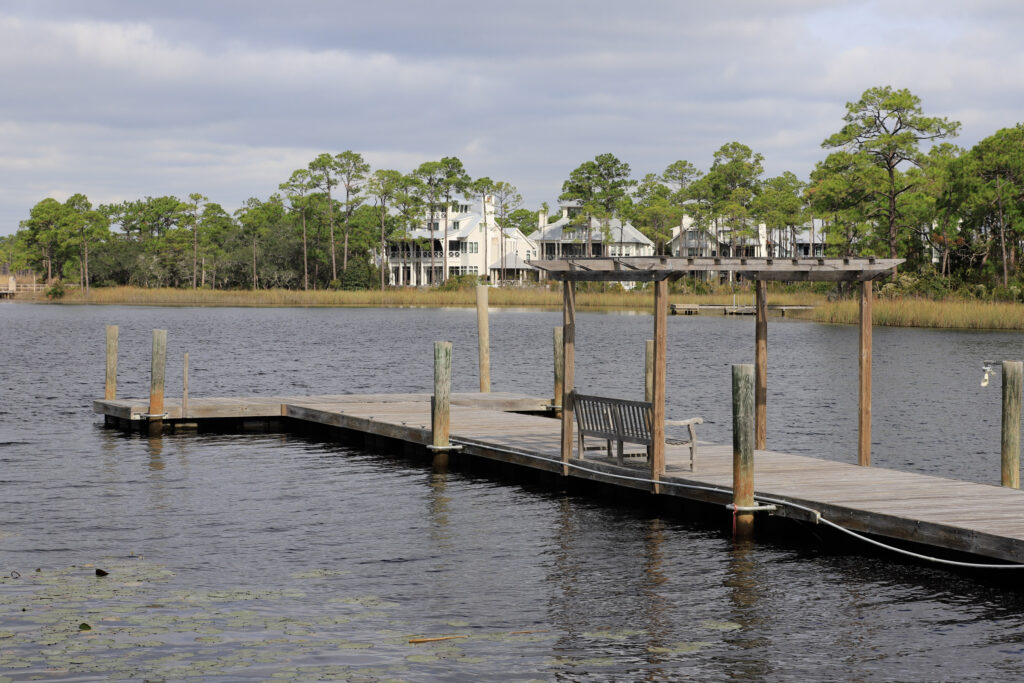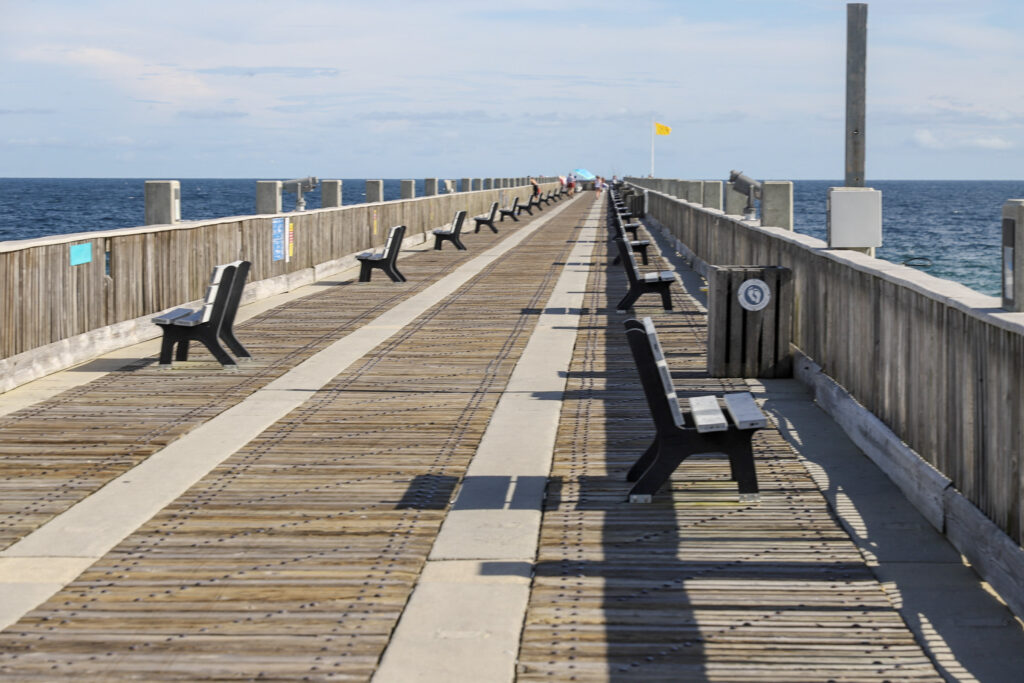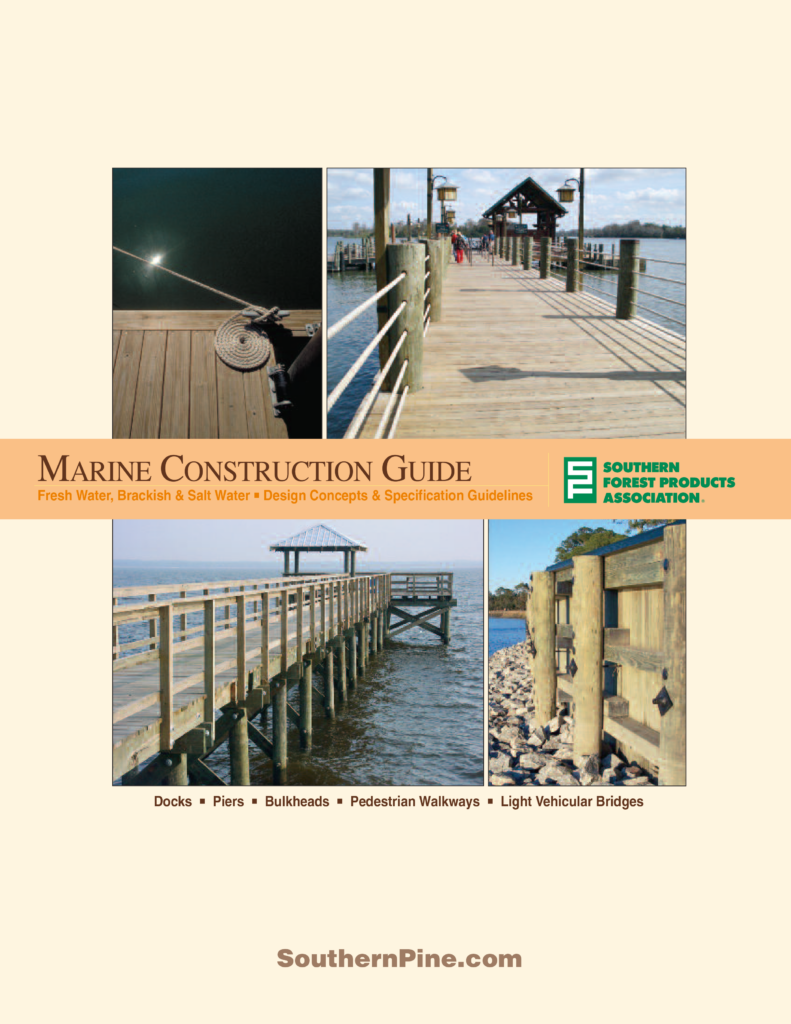Marine Construction
Southern Pine
Lumber for Marine Construction
Southern Pine lumber is a natural choice for marine construction and can be used for residential and commercial applications such as docks, piers, marinas, bulkheads, boardwalks, and light vehicular bridges.
Marine structures are exposed to especially harsh environmental conditions; therefore, accurate specification of lumber, timbers, and fastening hardware is critical to achieve proper performance and serviceability.
Industry quality-control standards for manufacturing and preserving Southern Pine assure long-term performance and minimize environmental impact. Advances in preservative treatments, modern design and construction techniques, and sustainable forestry management make Southern Pine a cost-effective, ecologically sound, and renewable construction material for marine construction.

Lumber Characteristics
Understanding Southern Pine lumber and its interaction with freshwater, brackish, and saltwater is important.
Southern Pine lumber is fundamentally composed of sapwood and heartwood cells. Lumber, timbers, and pilings cut from a log can be 100% sapwood, 100% heartwood, or a combination of both depending on log size, growth conditions, and other characteristics.
Sapwood
is the living outer portion of the tree composed of elongated cells, or tracheids, which actively contribute a tree’s growth and the movement of water within the tree.
Heartwood
is the inactive center part of the tree and becomes a repository for resins and extractives. These extractives impart a degree of natural decay resistance.
Logs that come from old-growth forests contain higher heartwood concentrations. Logs originating in second-growth stands and pine plantations have faster growth rates and contain more sapwood than heartwood.
Pressure-treating the sapwood portion with preservatives is the most important and effective method of protecting wood and assuring long-term performance. However, since heartwood is not able to absorb the preservative, it is not protected and more susceptible to marine borer damage and decay.
Wood Decay Factors
The constant or intermittent presence of water in a typical marine setting creates the perfect environment for fungal growth.
Fungi need four criteria to survive: moisture, warm temperatures, oxygen, and food. The absence of any one of these essentials will interrupt or prevent growth. That’s why portions of piers and piles constantly underwater do not decay – there’s no free oxygen. It’s also why protected wood framing above the water surface doesn’t decay – there’s no water or persistent moisture present.
But in areas at or near the waterline, where wood’s moisture content remains higher than 30%, decay is common. The only way to prevent this is to eliminate the fungi’s food supply by pressure treating the wood. As the preservative bonds with the wood fiber, it turns it into an undesirable food source for fungi and other organisms.

Marine Borers
Properly treated Southern Pine lumber, timber, and pilings are commonly used for submerged saltwater applications because it can be sawn with treatable sapwood on all four sides.
Marine borers are small invertebrate sea animals that burrow into the wood for food and shelter. They can either be crustaceans, such as gribbles and pill bugs, or mollusks, such as shipworms and pholads. Different species of marine borers are found around the world, and the U.S. Southern Atlantic coast and Gulf of Mexico are home to four different types. Consulting with local marine contractors, harbormasters, marina operators, and waterfront property owners is among the best ways to identify what types of borers are prevalent in a particular area.
Borer damage to wooden marine structures can be prevented, but it requires knowing the types of borers present and using the proper preservative treatment. For cases of marine borer presence in saltwater, chromated copper arsenate (CCA) remains approved for use as the primary preservative treatment to resist shipworms and gribbles.
Some types of marine borers tolerate preservative treatments, while other types do not. Investigate local conditions and specific marine borer activity and refer to American Wood Protection Association (AWPA) standards for detailed preservative treatment information.
For details on how to select and manage the use of treated wood to achieve best performance while minimizing the potential for adverse environmental impact, refer to:
Check out our Marine Construction Guide publication, a comprehensive guide to using Southern Pine in fresh, brackish, and saltwater environments that includes sizes
- surfacing
- profiles and patterns
- component specifications
- service conditions
- preservative specifications
- decking specifications and installation
- construction details
- walkway and light vehicular bridge details
